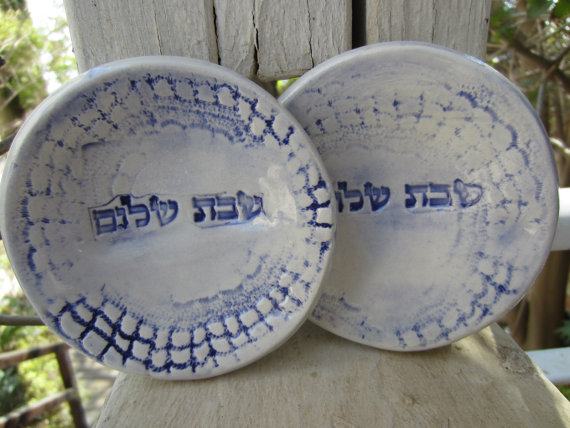
“At first blush, most of us are probably inclined to liken religious ritual to an heirloom, something handed down to us from our parents and grandparents. We’re enjoined, sometimes explicitly and sometimes more tacitly, to take care of rituals, to ensure that they don’t vanish. When seen from that perspective, ours is the responsibility of stewards, curators and historians.”
excerpt taken from Rites of Passage by Jenna Weissman Joselit on November 27th, 2011
When I was engaged to be married, my grandparents gave me two special wedding gifts. One was a pair of brass candlesticks they brought over with them when they immigrated to the United States from Russia. The second gift was a set of sterling silver knives, forks and spoons which they had been given for their 40th wedding anniversary. They never used the set and put them away for the first grandchild to be married, which was me.
How did earlier generations of Jews come by their menorahs and Kiddush cups and all the rest? Did they inherit them from their parents or grandparents?
Did they purchase them from the local craftsmen in their village or did they have Judaic gift shops in their town? Were these ritual objects carefully nestled inside the cardboard suitcases tied with string that so many Eastern European Jews brought with them at the turn of the past century? Chances are we’ll never know: The provenance of much of these Judaica items is just one of those things that seems to have disappeared, without a trace.
The First Jewish Catalogue, a Do It Yourself Kit, was first published in 1965. http://www.amazon.com/The-First-Jewish-Catalog-Do-It-Yourself/dp/0827600429. This book showed us how we could make our own Judaic arts and crafts. Many of us bought our Jewish stuff from the local synagogue gift shop. Others carried many purchases back from Israel; items secured in the hotel gift shop, or the artist colony in Safed or the shuk (marketplace) in Jerusalem. Still others undoubtedly received them as bar and bat mitzvah gifts or as wedding presents.
Today’s collectors of Judaica have a vast universe of places to buy Judaic objects of beauty and creativity, including the ubiquitous internet. Many of us are looking for items which derive inspiration from Hebraic and Judaic sources and from the flora and fauna of the land of Israel. We want to add items which adapt to our contemporary Jewish family. We want something different and unique, something that reflects our personal taste, or own style, yet meaningful to ourselves and families.
When I started to create items for my Jewish Heirlooms site, I was committed to making Judaica that was:
1. unique
2. that reflected Jewish traditions and all that surrounds me living here in Israel
3. that was affordable.
I was also looking to make new items, things we do not find in the typical synagogue gift shop, items that reflect the past but are also a new twist to the original ritual objects.
What objects in your home have you inherited from your parents or grandparents? What objects will you want to give to your own children or grandchildren one day? What items will you pass that symbolize your own family traditions ?
We have the responsibility to insure that our Jewish heritage does not disappear. We can choose to buy hand-made Judaic artifacts which will become the heirlooms that you will pass down to your children, their children and their children, ad infinitum.
Please send me your comments. Share with me those special stories about your own Jewish Heirlooms. Let’s open a discussion about heirlooms, antiques, memorabilia, legacies, heritage, inheritance, memory, chain of history, family, Jewish identity, traditions and treasures.
I will be happy to change peoples’ names and locations to maintain privacy issues, if you wish.
